
Table of contents
- Brief Overview of the Potential of Raising Goats
- Demand for Goat Meat (and Milk) is Skyrocketing
- Calculating Potential Goat Farm Profits
- Best Goats to Raise for Profit
- Raising Meat Goats for Profit
- Meat Profit Calculator
- What is the Best Breed of Goat for Meat?
- List of Meat Goat Breeds:
- Raising Dairy Goats for Profit
- Key Factors to Determining Whether Your Goat Dairy Farm Will Be Profitable
- Additional Sources of Income from a Dairy Goat Farm
- How to Raise Dairy Goats
- How Many Liters of Milk can a Goat Produce in a Day?
- Goats For Profit – Best Practices
- List of Dairy Goat Breeds:
- Goat farming in the USA
- Goat Farming In USA
- Goat farming in Canada
- Goat farming in Australia
- Goat farming in India
- Goat Farming in the Philippines
- Goat farming in South Africa
- Goat farming in Kenya
- 14 Ways to Make Money with Goats Video
- Conclusion
Brief Overview of the Potential of Raising Goats
Goats are hardy animals, easy to care for, and you can make money with them a bunch of ways (more on that in a minute…). In this comprehensive guide, we cover ALL the basics of making money with both dairy goats and meat goats, including the best breeds, how to calculate profit potential, and much more!
In the US, goats have largely been used in dairy production, for milk and cheese, but are increasingly being raised for meat, in response to consumer demand.
Goats also produce fine fibers like cashmere, angora, and mohair, and have grown in popularity as a safe, environmentally sound method of controlling weeds and brush in terrain that’s otherwise difficult to clear, improving pasture for grazing animals.
These sociable, docile animals are also popular as pets!
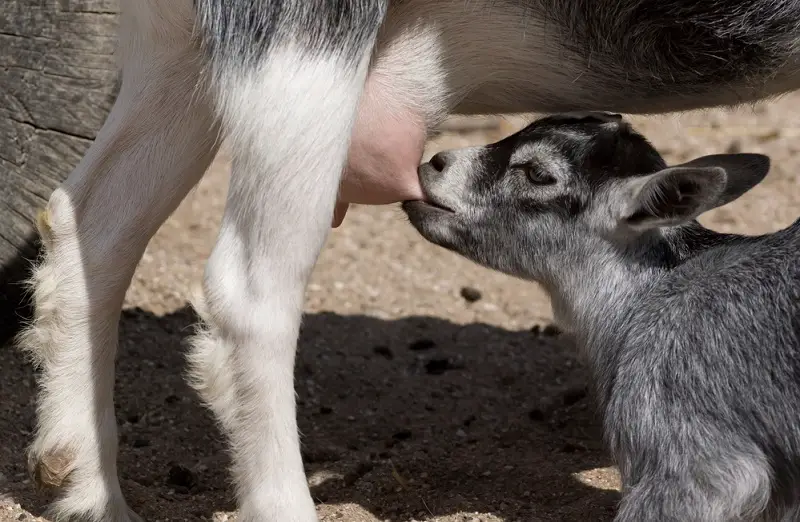
Demand for Goat Meat (and Milk) is Skyrocketing
The versatility of goat uses, combined with their ease of care, disease resistance, and reduced maintenance compared to other ruminants, have sparked a growing awareness of the profitability of goat farming in the United States.
The market for goat meat in the US greatly exceeds the supply. While not traditionally eaten in the United States and northern Europe, goat is one of the most popular meats throughout the rest of the world, and is not only eaten, but preferred by many groups.
There are no religious restrictions on goat meat, creating high demand in the growing Muslim population in America.
It is also in demand among Hispanic, Caribbean, and east Asian immigrants to the United States, who use goat meat widely in traditional foods.
Restaurant culture in the US is diverse, and chefs and restaurants compete to offer unusual or exotic dishes, authentic ethnic cuisines, or fusion and hybrid menus, to an increasingly adventurous and demanding foodie clientele.
Goat meat is higher in protein and lower in saturated fat than either chicken or beef, and a good source of potassium, iron, and omega-3 fatty acids, making it appealing to health-conscious consumers.
Goat milk is easier to digest and has more butterfat than cow’s milk, making goat milk and goat cheese appealing to many consumers who can’t drink cow’s milk.
There are plenty of other products that can be made from goat’s milk including goat cream cheese.
Goat farming tends to be naturally limited in scale, and their forage habits make it easy to produce animal products that are organic and free-range, making goat a good choice for people who want ethically sourced animal products.
All of these factors mean that the market for goat products increases every year, far beyond domestic supply.
Half the goat meat consumed in America is imported from Australia and New Zealand, a market that was worth $213 million to Australia in 2016.
Due to disease conditions in other countries, goat meat is only allowed to be imported from Australia and New Zealand, and new breeds of goats have not been allowed to be introduced to the US since the 1990s.
Beyond the obvious observation that demand exceeds supply, this reliance on imported goat meat also creates several opportunities for American producers:
- For those who consume goat meat for religious purposes, they often need the goat slaughtered under certain conditions. Those consumers prefer to buy living animals, so they can be slaughtered according to their specifications. This demand cannot be met by imported means.
- For chefs, foodies, and discriminating consumers, fresh, local, organic animal products are more appealing than frozen imported animal products. Local foods are more environmentally sustainable and socially responsible than food imports, and there is high consumer awareness of responsible food sourcing.
Finally, goats are browsers, and do best with access to diverse, weedy pasture. They do not typically thrive on feed lot conditions, for several reasons:
- Commercially produced goat feed is expensive, and less available than feed formulated for cattle or sheep
- Feed lot conditions expose goats to a higher risk of parasites and disease, and goats can be more difficult to treat medically; there are fewer qualified veterinarians familiar with the animal, and fewer medications designed specifically for goats
- Reduced physical exercise can cause problems with hooves and with kidding, that goats who are allowed to forage do not experience
For these reasons, and to satisfy consumers who prefer organic, free-range animal products, it is best to allow goats to forage and pasture in the terrain and environments where they do best.
This practice also reduces feed costs, and improves pasture for grazing animals, as goats do not eat grass. However, it also typically reduces the size and scale of commercial goat operations, keeping most goat farms at an average of 30 head, serving local markets.
This combination of factors…
- Diversity of products available from goats
- Ever-growing demand for goat products
- Restricted source of imports
- Self-limiting scale of goat-farming, preventing large-scale domestic producers from dominating the market (so far)
… creates a great opportunity for profitable goat farming in the United States, with a variety of product offerings and means to market.
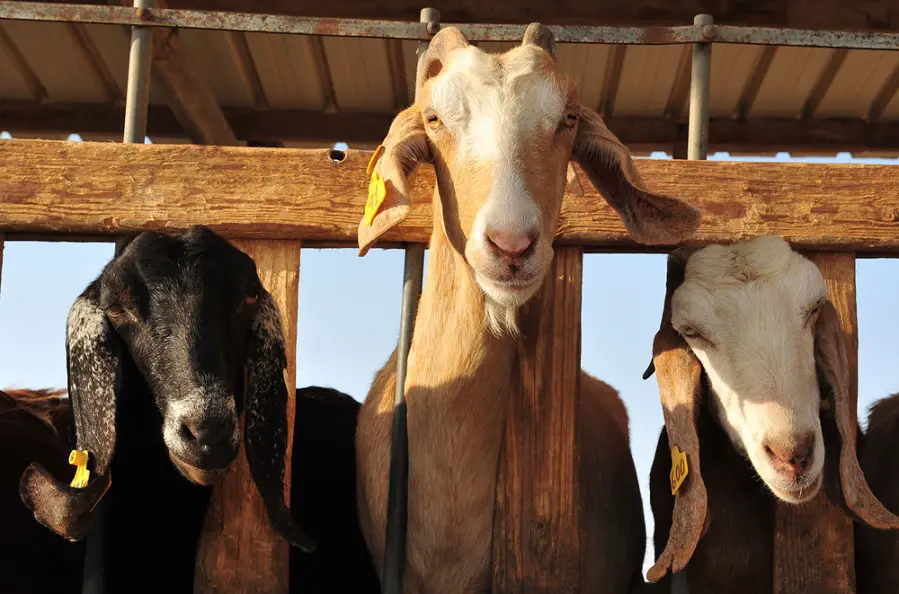
Calculating Potential Goat Farm Profits
The number of goats you can support on your land depends on the quality of forage and the productive capacity of your land.
One way to estimate is to calculate as follows:
If all the forage produced on an acre of your land could be harvested and measured as hay, what would you have?
For example, if you have 5 acres of poor pasture that would produce about 1 ton of “hay” each, and another 10 acres with excellent forage that would produce about 4 tons of “hay” each, then you would have a total of about 45 tons of hay/year.
The average doe requires about 1 ton of hay every year, half of which she will forage for herself, and half which she will require as feed, so your land could support about 45 does.
For reference, according to a 2010 survey of goat farmers in Arkansas, the typical meat goat producer had 12 goats on 5 acres, and the typical dairy goat producer had 14 goats on 15 acres.
To calculate profit per acre, you would need to factor in the cost of harvesting from your pasture to store and feed goats in the off season, and profits would be determined by the breed and purpose of your goats.
Here is an example of a budget calculation from Ohio, assuming 10 does/acre, and that you are raising animals for sale:


Best Goats to Raise for Profit
The best way to raise goats for profit is to start either a goat meat farm, or a goat dairy farm. While goat fibers are also a source of revenue, the profits realized from angora, mohair, and cashmere have decreased in recent years, and many farms that once raised goats for their fibers have converted into raising goats for meat.
When considering whether to farm goats for meat or milk, here are a few things to consider:
About dairy goat farms:
- Goat milk, cheese, and other goat dairy products (soaps, body butter, ice cream, etc.), are highly in demand
- Most successful dairy goat farms are small in scale, focusing on providing local products in their communities
- The need inhibits goat milk marketing to meet Grade A quality and safety standards that were developed for the sale of cow’s milk and can be difficult for goat milk to meet
- The problems with pasteurizing and marketing goat milk have led to an increase in popularity in goat cheese, aided by the higher fat content of goat milk over cow’s milk.
- Over half the goat cheese consumed in the United States is imported, although gourmet American goat cheeses compete well and win international awards
If you are considering starting a dairy goat farm for profit, consider whether you also have the skills and facilities to further process goat milk into cheese, improving profits by creating a higher-value end product.
About meat goat farms:
- The demand for goat meat in the United States far exceeds the supply, with over half the goat meat consumed in America being imported from Australia and New Zealand
- Goat meat is widely consumed in African, Hispanic, and Caribbean cuisines, and is favored by Muslims
- For Muslims, the meat must be halal, which requires that the animal be slaughtered under certain conditions. For this reason, many Muslims purchase live animals directly from goat farms
- Many meat processing facilities are specialized for cattle and will not accept goats
- If you are considering farming goat meat for profit, consider your local conditions carefully and plan your path to market accordingly
Whether you are raising dairy goats or meat goats, there are several opportunities to profit off of these growing industries. Generally speaking, it is thought that meat goat farming is more profitable than dairy goat farming since large, healthy meat goats can be sold at weaning and require less long-term care and investment. Dairy goats require the daily time investment of milking, and then the storage and distribution of milk to market.
Often the two ventures are combined to some degree, since meat goat does also generally produce more milk than their kids require, and dairy goat farms produce more bucks than necessary for the herd.
Every year, an unwanted 40,000-50,000 male goats are born on dairy farms in the United States and can be sold for meat. And when goat meat carcasses are sold, the skins can also be processed into leather, adding another profit source to a meat goat farm.
Let’s look at each type of goat farm more closely.
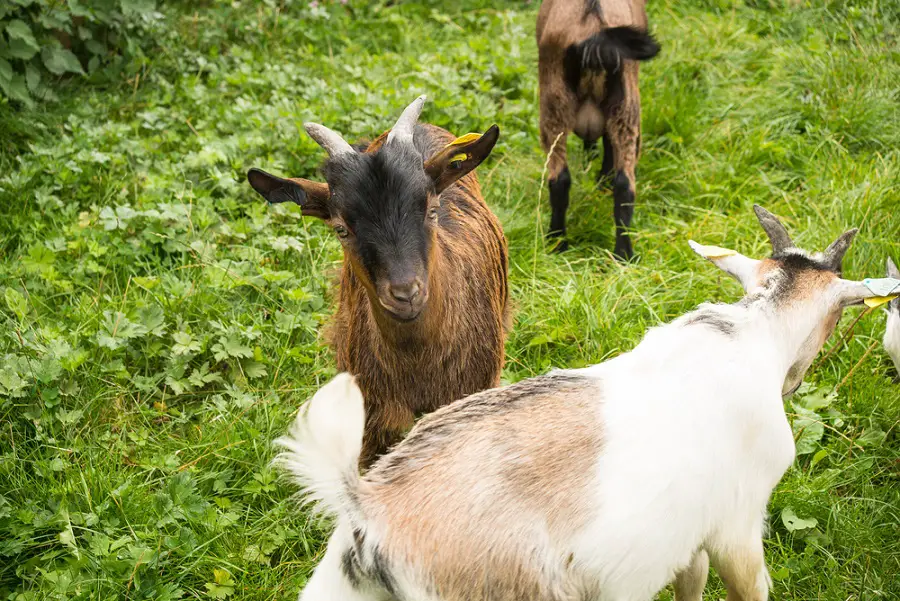
Raising Meat Goats for Profit
As stated above, goat meat is increasing in demand and popularity in America due to several factors. There is a lot of opportunity to enter this marketplace and start raising meat goats for profit.
When deciding whether to start a meat goat farm, it is important to first identify how you will sell your product. There are many paths to the marketplace, depending on your product and your location.
- Produce your own organic goat meat for sale to restaurants and discriminating consumers
- Sell your slaughter goats individually or through a co-op
- Sell your goats to a broker or meat processors
- Direct market live goats to ethnic or religious buyers
- There is also demand among Hispanics for 4-5-week-old milk-fed kids for cabrito
Due to the different demands of different consumer groups – live animals, carcasses, and frozen meat – it is important to plan your farm profits based on your consumer. It is also important to keep in mind the demands of these different consumers; restaurants require steady, ongoing, high-quality supply, while direct-to-consumer sales may peak during certain seasons or holidays. Your breeding and production schedule should be paced to the needs of your market.
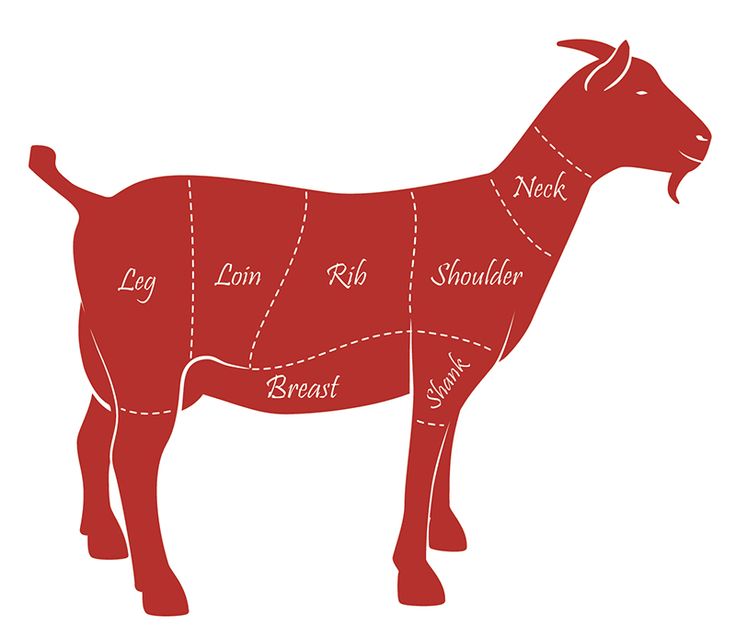
Meat Profit Calculator
When considering the profits possible from a goat meat farm, the simplest calculation is to consider:
- What will it cost to create the farm, including fencing, shelter, feeders, and an environment suitable for goats?
- How much will each goat cost to purchase? Will you need to purchase a buck, or can you rent one suitable for your needs?
- Sell your goats to a broker or meat processors
- What will it cost to raise a goat to market, including feed costs and medical care?
- How much can you sell your meat goats for?
Each of those values change depending on the size of your farm, the breed of your goats, the quality of your pasture, and the value of your end product.
Click here for an example of a simplified budget for a goat meat farm or see the file below.
And here is a more comprehensive meat goat business plan that takes into account all the factors necessary to plan for a profitable meat goat farm: Meat Goat Business Plan (click the link to download) or check out the file below.
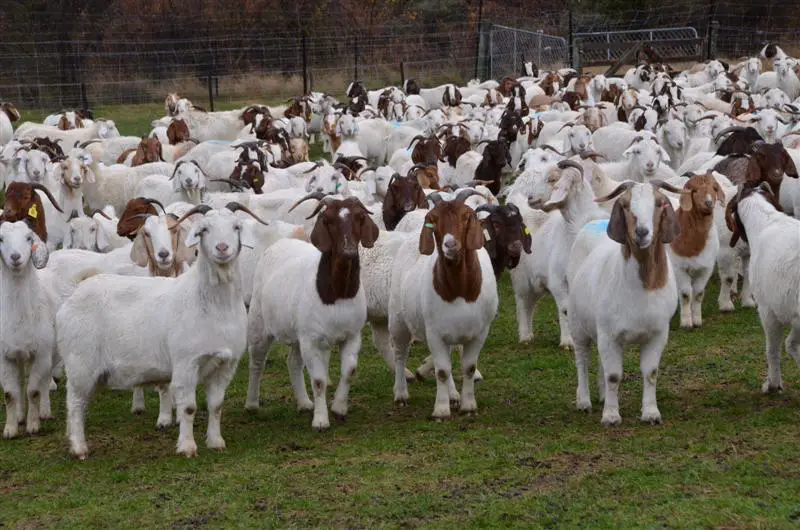
What is the Best Breed of Goat for Meat?
On a meat goat farm, the qualities of the sire are very important, because the sire determines the growth rate and weight of kids.
A high-quality, purebred sire can produce kids that are twice the weight at weaning of an average sire.
A cross-bred sire may produce kids that follow the wrong breed line, and don’t develop the desired characteristics.
This is why purebred Boer bucks are so dominant in the meat market – Boer sires create large, fast-growing kids, ready to market with minimal care.
List of Meat Goat Breeds:
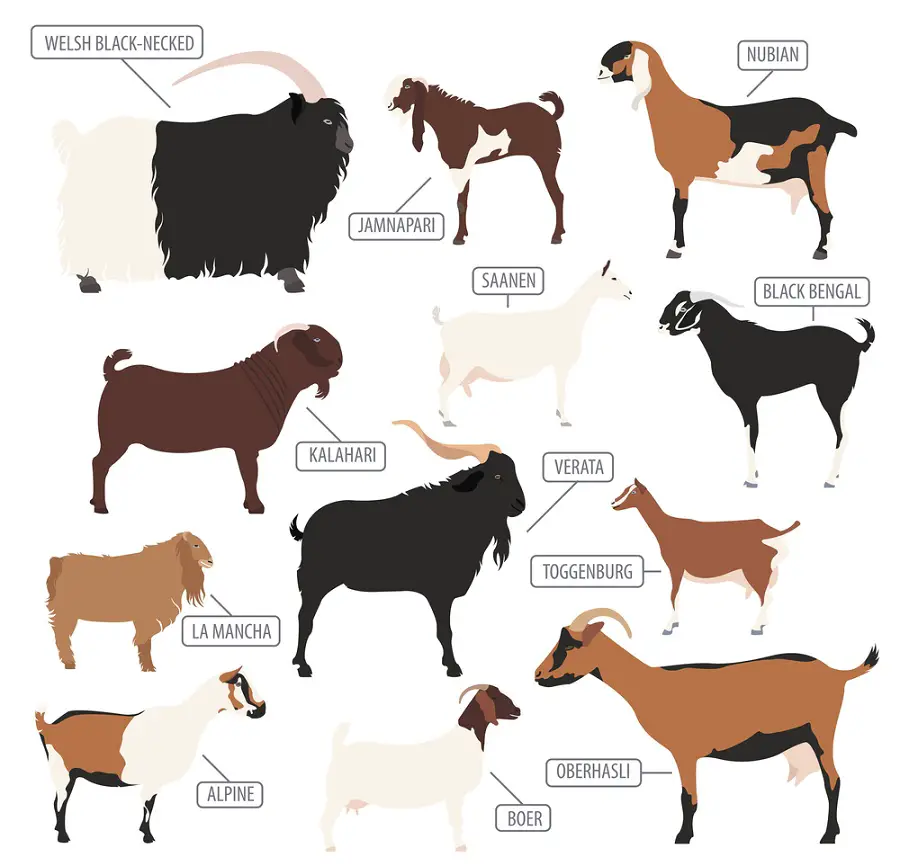
Meat goats are bred for fast growth and muscle development and are valuable for producing high quality meat with less care and lower cost than cattle. The best meat goat breeds are:
Boer Goats

Boer goats were developed in South Africa, in the early 1900s, and are the largest domesticated meat goat species. The name “Boer” is derived from the Afrikaans word for “farmer.” Boer goats are also resistant to disease and parasites, and are a docile breed, who are easy to manage. They grow quickly and can gain nearly half a pound per day under optimal conditions. Due to their many desirable qualities, Boers are popular for showing, and are among the most common goat species in the United States.
Mature Boer does weigh 190-230 pounds, while bucks can weigh up to 340 pounds. They are an average of about 30 inches height at the withers. They generally have white bodies and brown heads, with or without a blaze, and with long ears.
Spanish Goats
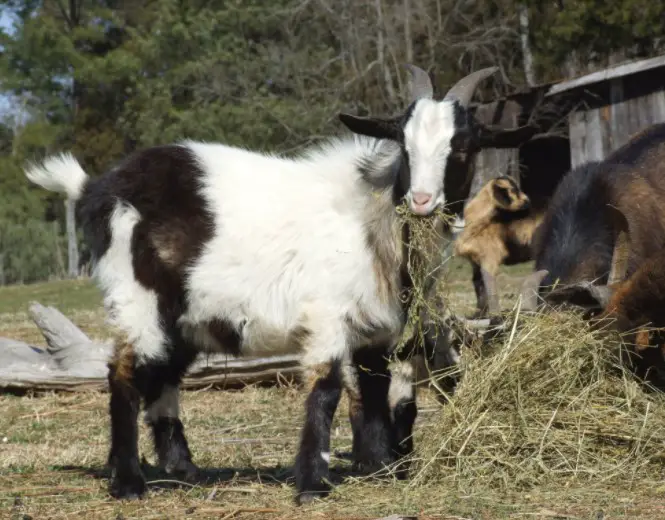
Spanish goats traveled to the New World with Christopher Columbus. The nautical routes the Spanish used for explorations were salted with goats and pigs, to establish feral populations that could be used for meat on later journeys. Spanish goats were a fixture of Spanish exploration, settlements, and missions in the New World. Over the generations, these goats have thrived in the Americas, and are hardier, easier to feed, and more resistant to disease than more recently imported breeds.
Spanish goats range from 50-200 pounds, with large ears that are held horizontally and forward of the head. They are horned, and bucks may have long, twisted horns. The coat may be any color, and they have a straight or concave face. These goats are hardy and long-lived, naturally resistant to pests and hoof problems, and does are highly productive. However the breed is severely threatened due to crossbreeding with Boers, and conservation is a priority for pure Spanish goats.
Pygmy Goats
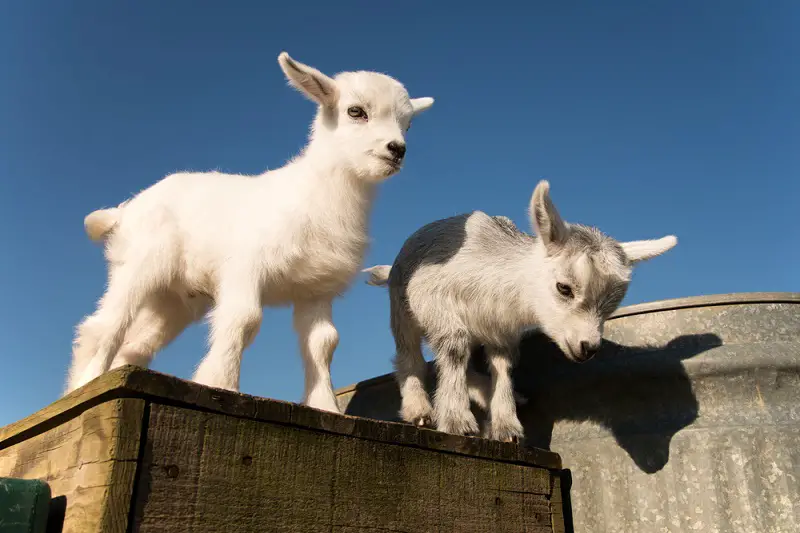
Pygmy goats originated in Africa, where they were developed for meat production. Also called the Cameroon Dwarf Goat, pygmy goats were introduced into the United States in the 1950s.
They have a variety of coat colors, with straight, medium-long hair, and males have a thick mane and full beards. Pygmy goats weigh about 75 pounds, and adults stand about 16-23 inches tall at the shoulder. They reach maturity very quickly and does can get pregnant at just 3 months. Does regularly give birth to triplets. They live for 10-12 years and are excellent meat animals as well as pets and companion animals, but they give little milk.
Kiko Goats
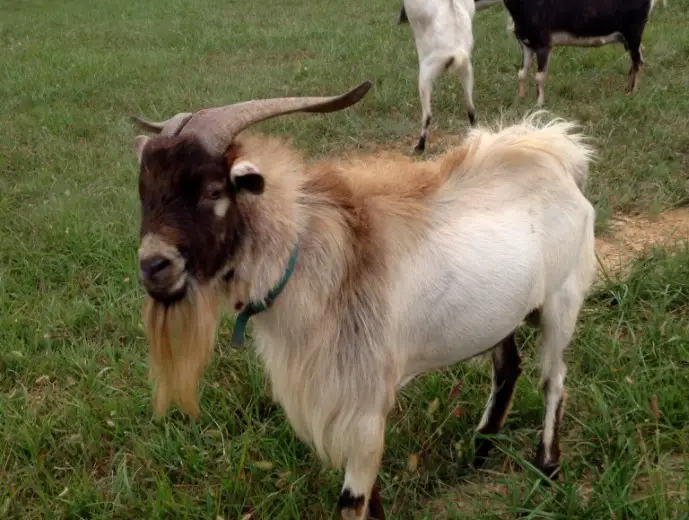
Kiko goats originated in New Zealand in the 1970s, when a group of ranchers developed a breed of goat specifically for high-yield, low-effort farming. Kikos were bred to be fast-maturing, disease- and parasite-resistant, and meaty. Introduced to America in the 1990s, Kikos have quickly become a popular breed of meat goat.
Adult Kikos weigh 120-175 pounds and are known for excellent mothering and disease resistance. They have large, upward, and outward sweeping horns, and compact, muscular bodies. They are an excellent meat goat, due to their ability to grow quickly and require little supplementation.
Fainting Goats

Fainting (Myotonic) Goats are smaller and easier to care for than other goat breeds. Unlike other goats, fainting goats do not jump, making them much easier to contain with minimal fencing.
Their unique fainting habit is not linked to any negative health conditions, and they live a normal lifespan. The fainting is due to a genetic mutation, and all fainting goats are descendants of a buck and three does that were left on a farm in Tennessee in the 1880s.
Fainting goats are typically 60-175 pounds and stand 17-25 inches tall. While classified as meat goats, their scarcity makes them more valuable as breeding goats. Only recently, fainting goats were classified as a threatened species, but the breed is being preserved and restored with extra care and attention.

Raising Dairy Goats for Profit
Raising dairy goats for profit is far easier than raising dairy cows. Goats cost less to purchase, and require less acreage, less purchased feed, and less expensive medical care than cows. They also require less labor and time in care and management.
However, starting a dairy farm still requires capital investment. Not only do the goats need to be purchased, but their pasture needs to be enclosed in goat-proof fencing (which can be something of a challenge, given the ability of most goats to climb and jump).
Key Factors to Determining Whether Your Goat Dairy Farm Will Be Profitable
The Quality of Pasture
If you have ample, healthy grazing for your goats, they will be healthier and require less commercial feed and less medical care.
Your Final Product to Market
Goat milk has difficulty meeting food standards designed for cow’s milk, so large-scale packaging and marketing can be difficult.
- If you plan on selling milk, you may need to invest time, labor, and capital in the equipment to pasteurize milk and transport it for distribution
- If you plan on selling raw milk, then it can only be sold direct to the consumer. You may need to invest in advertising costs to connect with a customer base
- If you plan on selling goat cheese, or beauty products like soaps and moisturizers, you will need to invest time, labor, and capital in creating these products, packaging them, and marketing them
Research prices for goat’s milk in your area. The costs vary widely but will help you calculate your potential profit against your costs. This example budget shows a cost of $4.30 to produce a gallon of goat’s milk, but doesn’t reflect the costs of capital investment on the dairy farm.
Fresh, raw goat’s milk often sells for up to $10/gallon, so a well-run dairy farm can be profitable, but you will need to calculate your own costs to see what your profit may be.
Additional Sources of Income from a Dairy Goat Farm
It’s natural to think of dairy goats and think of dairy products, like milk and cheese. But there are other sources of income that can be derived from dairy goats.
Showing
Dairy goats are popular show animals, and many goat farmers produce show animals as an additional income source.
Selling Goats for Meat
A dairy goat farm will inevitably have more bucks born than are desirable for the farm. Investing in a large-breed, meat goat for siring will produce kids that grow quickly and put on a lot of muscle, making the young bucks more profitable when sold for meat.
Selling Goats as Pets
More people are interested in these intelligent, sociable animals as pets.
Renting Goats for Landscaping
Goats are an efficient and environment-friendly way of removing unwanted weeds and improving pasture for grazing animals. Many people, and even cities, have programs where goats are rented or borrowed to clean empty lots, or improve rugged terrain, removing weeds that would otherwise be difficult or expensive to clear.
Goat Milk Products
There are a variety of products that can be made with goat’s milk. Some products are edible, such as goat milk cheese, yogurt, cream, colostrum, goat milk baby formula, and goat milk caramel. Goat milk is also used in consumer goods. Skincare products, in particular, are a luxury niche product. For example, there are goat milk lip balms, soaps, candles, goat milk body wash, deodorant, and dog food. You could sell your milk to a manufacturer or do the manufacturing yourself.
How to Raise Dairy Goats
High-quality pasture and the freedom to forage are the best living conditions for dairy goats. A variety of weeds, brush, and shrubs ensures that their diet contains necessary micronutrients and costs less than purchased feed. It also gives the goats needed exercise that helps keep them healthy, and prevent problems with their hooves, and when kidding.
Goats are naturally selective eaters and will avoid food that has been urinated on or defected on by another goat, which protects them from parasites, and will also naturally seek out foods with the healthy vitamin and mineral levels that they need. Pasture-fed goats are also important for consumers who want free-range, organic dairy products.

However, goats should also have access to high-quality hay (horse-quality), which they will browse all year, but rely upon in winter and in late summer when forage may be depleted. It is also common to supplement their diet with minerals, which may not always be present in your local soil or in your pasture.
Goats need 4-5 liters of clean water every day and will not drink soiled water. They need as much as twice that amount of water when they are lactating, which, on a dairy farm, is most of the time.
Does will need to be bred once a year. Although they can come in to heat as young as 5 months, they should not be bred until they are at least 8 months old or 80 pounds.
Once bred, a doe should be separated from the buck to preserve the taste of the milk. She will generally kid about 150 days after being bred, and goats often have twins or even triplets. If she is milked continuously, she will produce milk for up to 10 months, after which you should let her rest for 2 months before being bred again.
Dairy goats produce enough milk that a doe can nurse and be milked for production at the same time. Most dairy goat farmers wait until the kid is 2 or more weeks old, and then separate the kid from the doe overnight. They milk the mother in the morning, and then allow the kid to nurse freely all day.
As the kid becomes less reliant on the mother’s milk, you can increase milking to twice a day, about 12 hours apart.
Does will continue to breed and give milk for many years, although milk production gradually decreases with age. You can generally expect a doe to continue to kid and give milk for 10 or more years.
With a typical schedule of 3 kiddings every two years, and the high frequency of multiple births, a single doe can have 20 or more children over her lifetime and give over 40,000 liters of milk.
How Many Liters of Milk can a Goat Produce in a Day?
Dairy goats typically produce 1-3 liters of milk per day when they are lactating. The quantity of milk and the length of lactation differ from breed to breed, as does the amount of butterfat in the milk given. High goat milk production is highly desirable, even on meat goat farms; Boer goats often produce triplets and sometimes even quadruplets, although standard Boer does only have two teats. Excess kids often need to be bottle fed, creating an additional demand for fresh goat milk.
The best breed of goat for milk production depends on whether you want to market milk alone, or dairy products. Statistically, the Saanen produces the most milk per lactation period, with a range of 610-5,490 pounds, or 275-2,740 liters, of milk per lactation. But their milk is only 3.3% butterfat, among the lowest of the popular dairy goat breeds.
Nubians produce an average of 560-4,270 pounds, or 252-1921 liters of milk per lactation, with a startling average of 4.9% butterfat. Nigerian Dwarf goats have the highest butterfat of all dairy goats.
High fat content is important when making dairy products from goat milk, including cheese, soaps, and moisturizers. Goat’s milk is structurally different than cow’s milk in that it is naturally homogenized and the milk and cream will not separate. This makes the milk taste richer and smoother, but also makes it difficult to produce cream or butter from goat’s milk.
The best breed of goat for milk really depends on what your final product to the consumer will be, as well as the amount of space you have on your farm, and on your local climate. Some goat breeds do better in hot, arid regions than others, and some prefer cooler, damper climates.
Goats For Profit – Best Practices
There are plenty of easy businesses to run, but raising goats isn’t exactly one of them. Sure, they are not the most difficult animals in the world to care for, but if you want to raise healthy animals, you need to make sure that you know what you’re doing as a goat farmer.
Today we’re going to offer you some tips and best practices that will help you get started in raising goats for profit that are healthy and happy.
Housing
The first thing you need to consider before getting any goats is shelter. You don’t need to go all out and do anything extravagant. In fact, you don’t need much at all to keep a goat happy. It is a good idea to make sure their sleeping areas are three sided, so they can get in and out easily, and so there is plenty of ventilation.
Remember, they pee and poop wherever they are, and if this builds up in their sleeping area, they can end up getting sick. A lean-to is always a good choice, or you can even use a dog house as long as it’s large enough.
Your shelter should be large enough for one to two goats. It needs to have bedding, which can be straw, sawdust, or wood shavings.
Rake the bedding regularly to keep it clean, and change it as needed. Instead of tossing out the old bedding you can save it in a different area to use later for your compost pile.
Fencing
Goats are free range eaters, and they will wander if they think the grass is greener on the other side of the fence. So, it is important that you have adequate fencing to keep them in one area. The fence should be sturdy so they can’t knock it over or get through it.
There are different types of fencing, and what you use will likely have a lot to do with your budget.
Pallet fencing works well, and it is affordable. Another affordable and popular option is to get electric fencing. This isn’t going to hurt the animals if they touch it, but it will keep them in their own backyards. This type of fencing is also pretty sturdy, and can stand up to being butted by large bucks.
The fence should be tall, as goats could easily jump over. It should also be sturdy, so it doesn’t fall over when they are trying to look over it. Make sure your fencing is staked, and you can use zip ties to keep the fencing and stakes held together tightly.
One thing to keep in mind is that goats are excellent escape artists. However, this doesn’t mean that you will have to spend most of your time tracking them down. If you have adequate fencing, there shouldn’t be any problems keeping your goats in their own yard.
Grazing Area
If you are like most newcomers to raising goats, you are likely going to start out with just one or two. It is important to have enough grazing space for your goats, and if you have more than a couple, you are going to need plenty of space.
If you only have a couple of goats, you should be able to get by with a small, fenced-in area that offers plenty of sun, as well as shade. There should also be things in the pasture area for the goats to climb on to keep them occupied.
Rocks or even blocks of concrete will do the trick nicely. You may also want to consider setting up some rough, rocky areas for them to climb and walk on. Not only is this going to allow them to have fun and exercise, it will also help to keep their hooves trimmed so you don’t have to do it yourself all the time.
Food
One of the most important considerations when getting into raising goats for profit is to make sure that they have plenty of food, and it must be the right kind of food.
Remember, goats will eat pretty much anything that is in front of them, so you need to make sure they are getting the proper nutrients. This is especially important if you are raising the goats for milk or meat, because you want to make sure you are selling a product that is healthy and nutritious.
The first thing they need is good quality hay. It should contain alfalfa if possible, as this is exceptionally healthy for goats. This is not as important if they have a good grazing area, because they are getting plenty of nutrients from the grass they eat.
Goats Need Minerals
In order to ensure your goats are healthy, they need to have free-choice minerals in their diet. What are free-choice minerals? These are minerals that they can access in their feed at any time. Usually local feed stores carry mineral mixes that are perfect for goats.
The mix should contain salt, and if they do not, you will also need to make sure your goats have constant access to as much salt as they want (baking soda is good for them too).
There should be at least one cup of mineral mix per goat available to them at all times, so they can eat at least one cup per day each. One of the cool things about goats is that you don’t have to keep a close eye on their mineral intake. They know what they need, and they will eat as much or as little as necessary to fulfill those needs.
Make sure you have four to five holders that contain minerals, baking soda, and salt. The best types of holders are those that can be attached to walls. You should also have a storage container for the minerals, so you can have plenty on hand at all times. Don’t forget to keep a measuring cup around so you know you are giving them the right dose of minerals every day.
Goats Need Lots of Water
Any animal needs water, and if you want your goats to be healthy and happy, you need to make sure they are getting plenty of fluids. They should have fresh, clean water available to them at all times. Many goat farmers say they change their animals’ water at least three times daily, especially during the summer months when there is more dust.
It only takes a few minutes to do this, and it can make all the difference in the world when it comes to raising healthy, happy goats. Make sure to also clean and wash the water dishes regularly so there is no bacteria. You should have at least one water dish for every goat.
De-Worming
Goats are susceptible to many parasites, including worms. Having worms can be dangerous to goats, if not deadly, and this issue is among the top things that can kill a goat. It is important to set up a de-worming regimen as soon as you get your goats.
Most goat farmers de-worm their goats once weekly, and you can get what you need from the local feed store, but always make sure you discuss it with your veterinarian first to make sure you are getting exactly what you need. There are all-natural herbal de-worming treatments that work very well.
There are a few signs to look for that could indicate that a goat has worms. If it isn’t eating, is losing weight, the eyelids and gums are pale, the coat is rough, or they have poor body condition, this is a good sign that there are worms present. You will need to have a fecal test done to make sure this is the problem.
Hoof Trimming
You know how you have to trim your pets’ toenails? You have to do the same thing for goats, but it is the hooves you will be trimming. If not properly trimmed, and trimmed regularly, the hooves will always be growing, and they will split, leading to pain and other issues. This is a relatively easy task, and you can get the tools you need from the feed supply store, or order them online.
Make sure you get a good set of trimmers. This is not something you want to cheap out on. If you are unsure about the process involved, get someone who is experienced to do it the first time, and they can show you how to do it yourself.
Milking Supplies
This won’t apply if you are raising goats for meat, but obviously, if you are raising goats for milk, you need the right supplies for milking the goats. The first thing you will need is a milk stand. You can buy one, or easily make your own.
Some people don’t bother with a stand, but it does tend to make the job a whole lot easier. You will also need to have a steel pail for the milk to go into, along with a steel funnel and milk filters. You need these filters to remove impurities before the milk can be drunk.
It is important to have a good place to milk your goats. If you don’t have a stall or shelter that is large enough for this purpose, you will need to find another place that is sufficient, and close to where your goats live and graze. While milking, the goats should be sheltered so they can be dry and comfortable.
A Few More Tips
These are the most important things you need to know about if you are raising goats for profit. There are also a few other things you should be aware of, just to make sure that your goats are healthy and happy. These include:
Respect your bucks
When bucks are rutting, they only have one thing on their minds, and that is getting at the females. These animals can be extremely dangerous when they are “in the mood,” and you need to handle them with care. Many goat farmers only keep does, and borrow bucks when they need them for breeding to avoid potential problems.
Goats are not pets
Even though many people do become attached to their goats because they tend to be so friendly, these animals are not pets, and should not be treated as such. They are herd animals, and they need to keep their social order. They should not be domesticated the way you would with a dog or a cat. While you do need to maintain contact with them, they need the contact from other goats more than they need you around.
Start out small
If you don’t have any experience with goats, it is not advisable to go out and buy a whole herd at once. Stick with two in the beginning until you have a better handle on what you are doing. Yes, you should have two because they are social pack animals, but if you get too many, you could find yourself quite overwhelmed.
List of Dairy Goat Breeds:
Nigerian Dwarf Goats
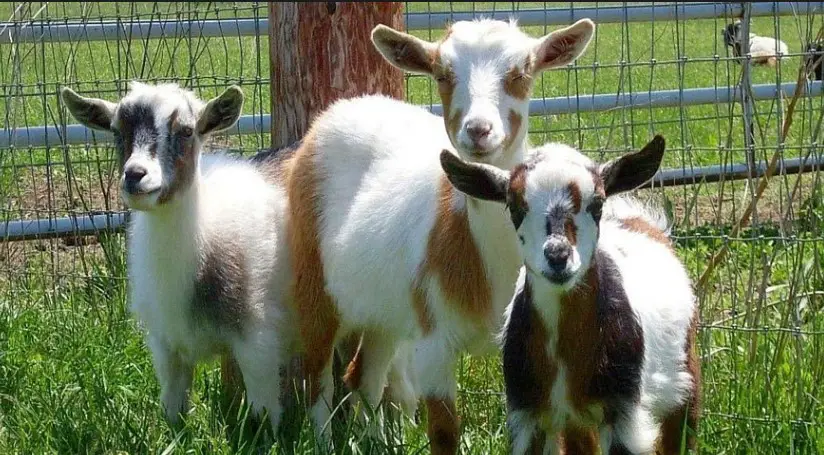
Nigerian dwarf goats originated in West Africa and were developed for easy maintenance and high milk production. They are gentle and intelligent animals, popular as pets, and frequently have blue eyes.
While these goats are only 17-22 inches tall at the withers, and weighing about 75 pounds, the Nigerian Dwarf goat produces 1-8 pounds of milk per day. Their milk is higher in butterfat than other breeds, at 6.5%, making their milk especially prized for cheese, soap, and cream production.
Nubian Goats
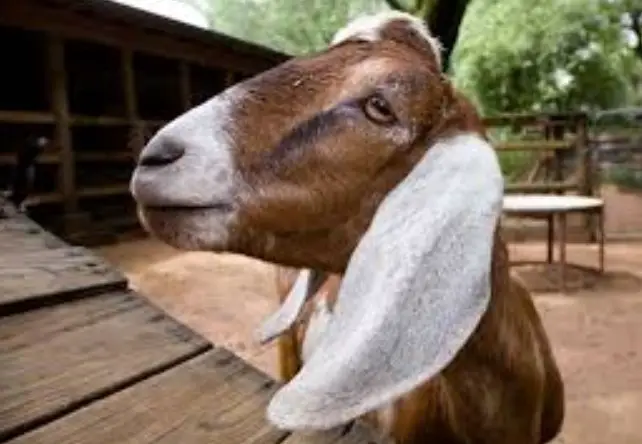
The Nubian goat breed originated in England in the early 1900s and was a crossbreed between native British goats and goats from the Middle East and North Africa. Nubians are docile and sociable, and often very vocal.
Nubians are a large breed, and does weigh an average of 135 pounds, with bucks weighing 175. They stand 30 inches tall at the withers, and have distinctively long, pendulous ears. Nubians produce 4-7 liters of milk per day and have a high butterfat content in their milk compared to other dairy goats, at 4-5%.
Lamancha Goats

The Lamancha is the only breed of dairy goat that was developed in the United States. They originated in the 1920s in California and were bred for producing high volumes of high-fat milk, while being docile and people-loving. The cooperative, good-natured Lamancha is an excellent dairy goat or companion animal.
This breed can be any color but is recognized for its small ears. They are small goats, about 28 inches tall and weighing 130 pounds. Lamanchas are famous milk producers; does can produce about 3 liters a day and can be milked for up to 2 continuous years without re-breeding. Their milk contains about 3.9% butterfat.
Saanen Goats
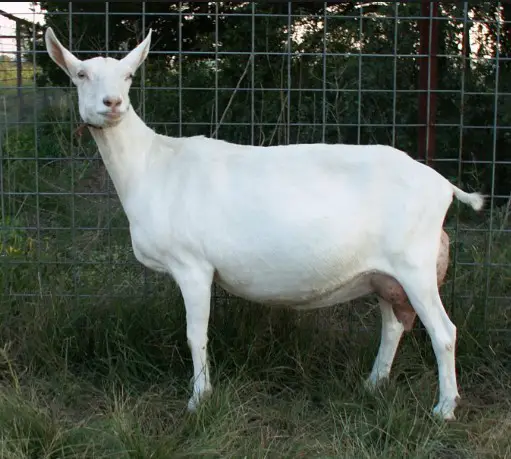
Saanen goats are Swiss domestic dairy goats. Switzerland has the most productive dairy goats in the world, and the Saanen are the most productive Swiss breed. These highly productive goats have been exported widely and now have populations in more than 80 countries around the world.
Saanens are the largest Swiss goats, standing 35 inches at the withers, and weighing over 185 pounds. They have white skin and short white hair and produce an average of over 221 gallons of milk over a 264-day lactation period. Their milk contains about 3.2% butterfat.
Alpine Goats
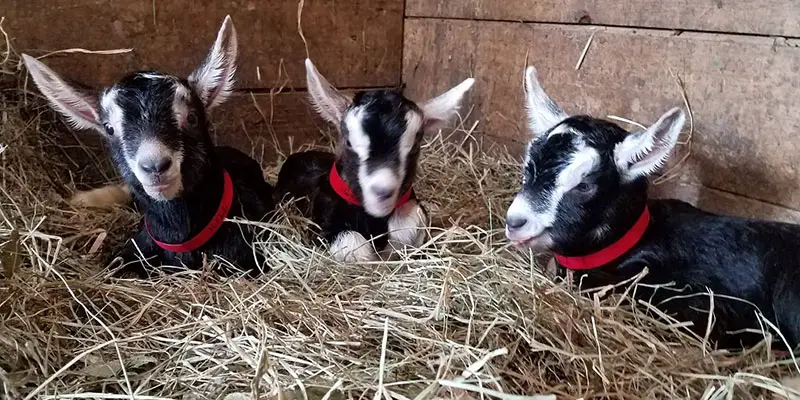
Alpine goats originated in the French Alps, and they produce large quantities of low-fat milk. This breed is popular due to the large quantities of milk produced, long lactation period, and docile temperament. Today, there are many sub-species of Alpine goats, including British Alpine, French Alpine, American Alpine, and Swiss Alpine.
Alpine does weigh an average of 135 pounds, with bucks weighing 170 pounds. Males stand 32 inches high at the withers and does are a couple inches smaller. While Alpine goats are heavily crossbred and come in a variety of colors, their ears are distinctively upright, medium-sized, and forward-facing. A female Alpine goat gives an average of 4-5 liters of milk daily, with about 3.4% butterfat. Alpine goat milk is much higher in protein and vitamins than Saanen goat milk, with just a little more fat.
Toggenburg Goats
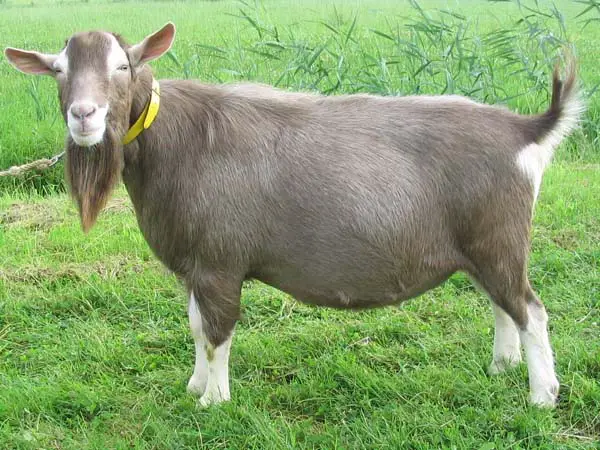
Toggenburg goats are a dairy goat breed developed in Switzerland, dating back to the late 1800s. It is a highly productive breed of dairy goat and has been exported to more than 50 countries around the world, with a distinctive sub-species in Britain.
Female Toggenburg goats weigh around 120 pounds at adulthood, while males weigh an average of 165 pounds, and the height ranges from 34 to 38 inches at the withers. They are generally mouse-grey in color with white facial markings but have a variety of coat colors. They give an average of 3 liters of milk per day, with an average butterfat content of 3.8%.
Oberhasli Goats
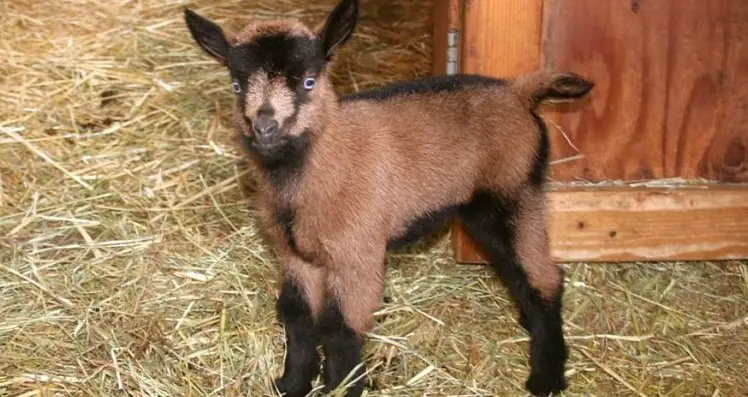
Oberhasli goats are an American goat species descended directly from 5 chamois colored goats imported from Oberhasli in Switzerland in 1936. Until 1977, this breed was known as “Swiss Alpine” in America. In 2010, there were a total of 1729 Oberhasli goats in the United States, distributed over about 30 different states.
Oberhasli goats are similar in size to Toggenburgs, though slightly smaller, with does weighing 120 pounds, and bucks weighing 150 pounds. Height ranges from 28-30 inches at the withers. They have a brown coat with a black dorsal stripe. They give an average 1-3 liters of milk per day, with butterfat content ranging from 3.5 – 4%. These goats are also prized for their handsome markings and calm demeanor as well as their milk production.
Goat farming in the USA
What breeds of goats are commonly raised in the USA?

Goat Farming In USA
There are three types of breeds that can be found in America: dairy, fiber, and meat.
Dairy
Dairy goats are popular for their milk production. The top three dairy goats that can be found in America include:
Fiber
Fiber goats are popular for their silky fiber undercoats that can be used in a variety of products. The most common fiber goat in America is the Angora breed.
Meat
Meat goats, as the name suggests, are popular for their high-quality meat. The most common meat goats that are in America include:
How much does it cost to raise goats in the USA?
Goats can cost anywhere between $50 – $300 depending on the breed and sex. That’s just for the goats themselves. There are other expenses that you have to take into consideration. Goats need proper shelter, goat feed, and annual check-ups. You also need to plan for unexpected expenses in case your goat is having difficulty breeding or training. This guide outlines, in detail, some of the specific costs of owning and maintaining your goats.
What are the pros and cons of raising goats in the USA?
- Most goats are familly-freindly.
- Goats are fairly easy to take care of if you know what you’re doing.
- They have awesome, fun personalities.
- Goats are super sweet and love companionship.
- They can produce a good amount of offspring which in turn can bring more money to your farm.
- Goats can easily get out of their containment area.
- They can be a little needy and all in your personal space if you let them.
- Goats are can be really noisy.
- If you’re not careful, goats can destroy things like gardens, bushes, etc.
What are some “best practices” for raising goats in the USA?
Here are a few helpful practices to keep in mind that’ll make raising your goat in America a little easier.
- Goats will roam around and graze the pastures all day long. But, when it’s time to feed them, consider hand-feeding them. This will prevent your goats from overeating.
- Goats are great escape artists. That being said, build a fence or containment area that’s strong and tall enough to keep your goats on the farm.
- Though they don’t need an elaborate living area, your goats will need something that can protect them from harsh weather conditions.
- If nothing else, make sure that your goats have access to plenty of fresh, clean water daily.
Goat farming in Canada
What breeds of goats are commonly raised in Canada?

According to The Canadian Goat Society, the most recognized breeds of goats are as follows:
Dairy
- Alpine
- Saanen
- Toggenburg
- Oberhasli
- Nubian
- LaMancha
Fiber
- Angora
- Nigerian Dwarf
- Pygmy
How much does it cost to raise goats in Canada?
The cost of raising goats in Canada can vary depending on location, breed, and sex. Ontario is one of the most popular places to buy and sell goats in Canada. While browsing through Kijiji, I found that most goats in Canada can average between $50 – $400. That’s excluding other expenses.
Goat farming in Canada can run anywhere from $1000 – $700,000. Fortunately, there are programs like the Ontario Soil and Crop Improvement Association that may provide grants to farmers who are just starting or need financial aid.
What are the pros and cons of raising goats in Canada?
- It offers a chance to be an agricultural society again.
- It’s becoming more popular in the Eastern province of Ontario.
- If you mean business, it’s a good way to make some money.
- Mohawk Council of Akwesasne’s economic-development program
- It’s easy to bite off more than you can chew. Norma Winters, a council member of the Mohawk Council of Akwesasne’s economic-development program, recounts that she was prepared to have 40 kids and ended up having 80 of them.
- You need a decent amount of land to raise your goats.
- Tensions between Canada and China may result in goat farming not being as lucrative as it normally would be.
What are some “best practices” for raising goats in Canada?
Here are a few helpful tips to keep in mind when raising goats in Canada.
- Goats need a living area that’ll keep them cool in the Canadian summer and keep drafts out in the winter.
- When you’re starting your farm, create a business plan. This will help you determine what it is you want to get out of goat farming. Also, it’ll help you choose the proper farming strategies for your goats.
- Determine if you want goat farming to be a hobby or an actual business. Doing this will help you figure the cost of food, veterinary care, shelter, and land.
Goat farming in Australia
What breeds of goats are commonly raised in Australia?

The most recognized breeds of goats in Australia, according to the Department of Primary Industries, are as follows:
- Nubian
- Angora
- British-Alpine
- Saanen
- Toggenburg
How much does it cost to raise goats in Australia?
Over the last few years, goat prices in Australia have soared to new heights. According to the Meat and Livestock Australia, since 2018, goats have been sold at .55 USD/kg. At the beginning of 2019, goats were priced at roughly .65 USD/kg.
What are the pros and cons of raising goats in Australia?
- There aren’t any religious or cultural concerns when it comes to eating goat meat.
- Goats will help maintain the growth of blackberries.
- Goats can survive in rocky areas better than most animals would.
- Goat farming is a small industry in Australia.
- They eat a lot of food and greens which can be a problem if you live on a small island.
- Goats can easily escape and live wild in the state.
What are some “best practices” for raising goats in Australia?
Here are a few helpful tips for raising goats in Australia.
- Goats need a study living environment that they can’t get out of. If they do, they may eat clothes that have been hung outside to dry.
- If you’re starting a farm, start with a small herd of goats. They should be locked up at night and allowed to roam during the day to find food.
- Providing your goats with a salt lick will help promote good health. A salt lick is an area where goats can lick salt off the ground.
- If you have a big goat farm, the does should outnumber the bucks 20 to 1.
Goat farming in India
What breeds of goats are commonly raised in India?

The Tamil Nadu Agricultural University deems the following as the top 5 goat breeds in India:
How much does it cost to raise goats in India?
Like with other animals, the costs of raising goats depend on several factors including location, sex, breed, market, etc. To get a general idea of how much goats go for, IndiaMART has a wide selection of goats for sale at various prices.
What are the pros and cons of raising goats in India?
- Most of the goats in India are multi-purpose animals.
- Goat farming doesn’t require a lot space.
- The goats in India can easily adapt to their environment.
- Most of the methods of goat farming in India are outdated.
- Most goat farmers don’t use th resources they have to learn more about goat farming.
- There aren;t adequate vetrinary services in India for goats.
- There isn’t a high demand for goats in most places in India.
What are some “best practices” for raising goats in India?
Here are a few helpful tips for raising goats in India.
- The problem with most goat farms in India is that most farmers have no idea what they’re doing. They decide they want goats and then just act on that. Do your research before you buy goats to make sure that you’re making the wisest decisions for your business.
- There’s a good amount of land that you can use to raise goats in India. Try to find someplace that has plenty of clean water.
- Raise your goats in a place where they’re in high demand. Some places aren’t looking for more goats, and you wouldn’t want to waste your money in a place where you can’t make a profit.
- Before you start your farm, decide on whether you’re selling your goats for milk, meat, offspring, or fiber.
Goat Farming in the Philippines
What breeds of goats are commonly raised in the Philippines?

The most common breeds that can be found in the Philippines include:
- Nubian
- Saanen
- Alpine
- Boer
How much does it cost to raise goats in the Philippines?
The Philippine Statistics Authority has an average estimate of how much goats sell for in the Philippines according to their currency.
What are the pros and cons of raising goats in the Philippines?
- You don’t need a lot of capital to start a goat farm in the Philippines.
- Goat farming offers more employment opportunities for both men and women.
- Goats are easier to train and carry fewer diseases than other farm animals.
- Goats will easily adapt to the climate conditions.
- It can be hard work.
What are some “best practices” for raising goats in the Philippines?
Here are a few tips on raising goats in the Philippines.
- Find a place that’s comfortable for your goats. Also, make sure the place you build your farm has a high demand for goat milk/meat.
- Have a business plan put together before you start your farm.
- Before you start your farm, make sure you have an idea of what breeds you want to house.
- Goats are easy prey to predators. Build a containment are strong enough to keep your goats in and predators out.
Goat farming in South Africa
What breeds of goats are commonly raised in South Africa?

The most common goat breeds in South Africa include:
- Boer
- Angora
- Saanen
- Kalahari Red
- Kalahari Red
- Pygmy
How much does it cost to raise goats in South Africa?
Goats go for various prices in South Africa. This website will give you a general idea about how much they go for, specific to their South African currency.
What are the pros and cons of raising goats in South Africa?
- Goat farming can be done by anyone, and it’s an easy business to get into.
- There are plenty of places for goats to get something to eat.
- Goat farming in South Africa can offer multiple employment opportunities for poor people.
- Goats produce lots of manure that can help your crops grow.
- During the dry season, goats may become malnourished.
What are some “best practices” for raising goats in South Africa?
Here are a few helpful tips for raising goats in South Africa.
- Although you don’t need much experience to start your farm, it wouldn’t hurt to take a training class or two, or visit nearby farms to get an idea of how one if run.
- Before you start your farm, educate yourself on the breeds that are more profitable than others.
- If you want to have a successful farm, make sure your goats are producing at least 2-3 kids during the breeding season.
- Worms are a very common health issue among goats. Get your goats dewormed a month after their birth.
Goat farming in Kenya
What breeds of goats are commonly raised in Kenya?

The most common goat breeds found in Kenya are as follows:
- Toggenburg
- Nubian
- Saanen
- Alpine
How much does it cost to raise goats in Kenya?
Again, breed, location, sex, and production value. This website contains a wide listing of goats imported from Kenya and South Africa at various prices. You don’t need a lot of money to start a goat farm in places such as Kenya.
What are the pros and cons of raising goats in Kenya?
- Goat farming doesn’t require a huge monetary investment.
- Goat milk, meat, and fiber are in high demand.
- The climate is very suitable to the needs of your goats.
- Goat farming is a great way for women and children to make a living.
- Goats may not always have access to clean water.
What are some “best practices” for raising goats in Kenya?
Here a few tips on raising goats in Kenya.
- Make sure you build your farm in a place that has access to clean drinking water.
- Build a suitable living environment for your goats. Incorporate a place where they can sleep and a place where they can roam around.
- Give your goats annual vaccinations to prevent the spread of disease and parasites.
14 Ways to Make Money with Goats Video
In this video you will find out ways that you can make money with the goats. Some have to do with the goats themselves, some ideas have to do with goat milk, and some have to do with products such as goat milk soap.
Conclusion
While it may seem like there is a lot of work and expense in raising goats, they are actually one of the easier animals to care for. As long as you are giving them the diet they need, a comfortable place to rest, and an area to graze, you will be able to raise goats for profit in no time.
All over the world, goats have been valued for centuries as animals that are intelligent, easy to care for, and versatile, with a wide variety of uses in nearly every situation. Today, goats are finding new niches in America, as changing demographics and market forces make the goat more appealing. More people are discovering that these small animals can create a powerful profit, with many ways to take advantage of their natural abilities.
As America becomes more ethnically diverse, and develops a more adventurous palate, goat meat is in high demand.
As our cities grow, and competition increases for land and water, goats become more commercially viable than cattle and grazing livestock.
And as consumers are more willing to pay a premium for local, organic, ethical food sources, farmers are finding goats to be an ideal offering for discriminating customers. Goats are an easy way to take advantage of all these new opportunities, and more people are discovering that goat farming is a profitable business.
Even with all this consumer demand, there are still challenges getting goat products to market, as existing pathways, regulations, and facilities are still largely focused on cattle. It is important to carefully consider your obstacles, as well as your opportunities, before embarking on this exciting journey.
With all the consumer demand, and real nutritional and environmental benefits of goats, these regulations and expectations will change in the coming years but are still a factor.
Remember that being a farmer is still being an entrepreneur and find your niche and stake a claim to your segment of this fast-growing market.





3 responses to “Raising Goats for Profit: Complete Beginner’s Guide to Meat Goats & Dairy Goats”
This is good enough for me. Thanks for this opportunity. I admire rearing goats and this will help my desire to engage in this occupation even as I am about to retire from the military service.
Thanks for your comment, Komolafe!
Thanks a lot, this is the best guide and write up about goat farming. You really opened up the secrets and directly encouraged me.